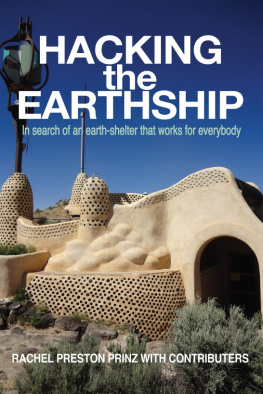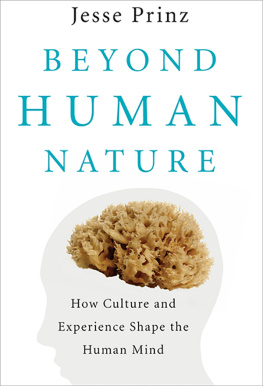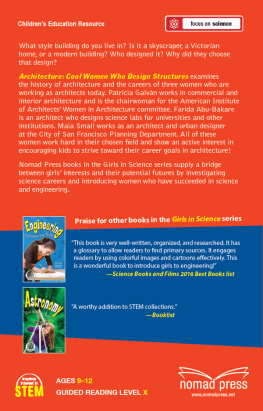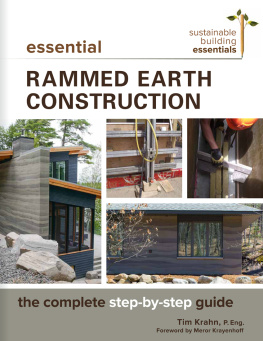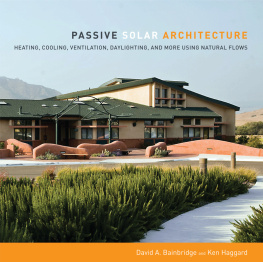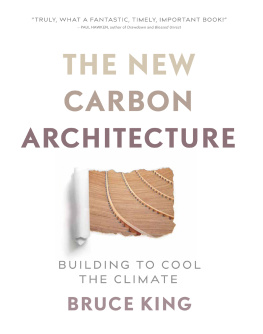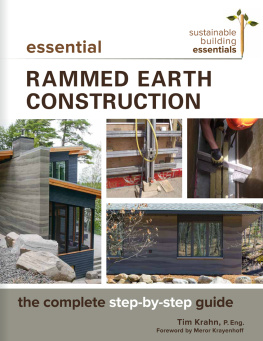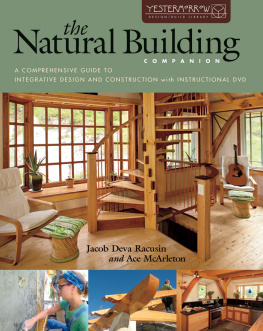HACKING THE EARTHSHIP
IN SEARCH OF AN EARTH-SHELTER
THAT WORKS FOR EVERYBODY
Rachel Preston Prinz
andContributors
Archinia Press
ALBUQUERQUE, NEW MEXICO
Hacking the Earthship
Rachel Preston Prinz
Copyright 2015 by Rachel PrestonPrinz
Published at Smashwords
All rights reserved. No part ofthis publication may be reproduced, distributed or transmitted inany form or by any means without the prior written permission ofthe publisher, except in the case of brief quotations embodied incritical reviews and certain other noncommercial uses permitted bycopyright law. For permission requests, write to the publisher,addressed Attention: Permissions Coordinator, at the addressbelow.
The views and opinions expressedwithin are those of the listed authors and do not necessarilyreflect those of the other authors and contributors. The author,contributors, and publisher accept no responsibility, norliability, in any manner whatsoever for any error or omission, norany loss, damage, injury, or adverse outcome of any kind as aresult of the information contained in this book or reliance uponit. Readers are advised to seek professional advice prior to designor construction of any building.
The publisher accepts noresponsibility for the accuracy of the URLs referred to in thispublication, and does not guarantee that any content on thosewebsites is, or will remain, accurate or appropriate.
Archinia Press
410 Solano Drive SE
Albuquerque, NM 87108
http://www.HackingtheEarthship.blogspot.com
Original Book Layout 2013BookDesignTemplates.com
Cover design by AriannaShewfelt
Photos unless otherwise noted areby Rachel Preston Prinz
Hacking the Earthship/ RachelPreston Prinz. 1st ed.
Genre: Non-Fiction
Keywords: Earthship,Sustainability, Green Design, Natural Building
ISBN: 978-0-9861155-1-6
Contents
Link to : New Home DesignWorksheet
Link to : Site DesignChecklist
Acknowledgements
There is no way that this bookwould have come together without my amazing contributors. I am sothankful for their participation and am honored to count them allamong my friends and inspirations.
I also want to thank professorsDavid Woodcock, Joe Hutchinson, and
Charles Graham and architects David Puckett, Randy Byers, DougDeChant, and Barbara Felix who all taught me new ways ofseeing
the architectural world.
I thank my mom for taking me toParis and gifting me
with my passion for architecture, and my dad for showing mehow
doing good work by hand makes better buildings.
Special thanks to Illac Diaz whochallenged me
to make a real difference for people with this work.
Thanks also to the many people whocontacted our office to ask for help
in dealing with their Earthships, as well as all the people whocontributed
their knowledge, expertise, and experiences through our surveys,interviews, and research.
I would also like to thank myhusband, my family, and my friends
for always standing by me, even when I do crazy things
like disappearing for 6 months to write a book.
"This hour in history needs adedicated circle of transformed nonconformists. Our planet teeterson the brink of annihilation; dangerous passions of pride, hatred,and selfishness are enthroned in our lives; and men do reverencebefore false gods of nationalism and materialism. The saving of ourworld from pending doom will come, not through the complacentadjustment of the conforming majority, but through the creativemaladjustment of a nonconformist minority."
MARTIN LUTHER KING,JR .
Introduction
Thisproject started with one idea: Share the answers to the questions Igot asked day after day about improving Earthships. What startedout as 3 pages on the Archinia website a few years back has nowgrown into a coalition of designers, engineers, sustainabilityexperts, and people in-the-know all sharing their knowledge so thatwe can try and help make the world a little bit betterplace.
We love the organic forms ofearthen architecture and the idea of living freely and in concertwith nature growing our food, reducing our need for systems,rising and setting with the sun these are noble, sustainable, andmindful ways to live.
Living in Taos, New Mexico at theepicenter of the Earthship phenomenon, we are impressed by thesestructures every time someone comes to visit, because theyinevitably want to see them. We have many friends who have lived inthem. We have visited them, interviewed their builders, and evengone to workshops about them. While we celebrate the Earthshipssuccesses like the glass bottle walls that radiate a mosaic ofblue, green, and amber light we also see and hear peoplesfrustrations over their flaws.
We are often asked whether theEarthships are as good as the hype around them suggests. When westarted posting about common problems on our website, people tooknotice and started asking us not only to help solve the issues theywere having with their existing Earthships, but also to help themhack the design to make a more natural version. As a designer, Iwas intrigued by this idea because I also wanted to see if theEarthship could be done with natural materials. So, I rallied myteam and we started working. We found research, collected data,took tours and made observations, and in order to build a newparadigm we got back to basics.
This return to basics started forme when I moved to New Mexico seven years ago. Previous to my move,I lived in Vail, Colorado and worked as a project manager for anarchitect who designed $7million+ homes in the most prestigiousareas of the Rocky Mountains. Working on projects of that scale andquality gave me one set of values around architecture: the bigger,the prettier, and the more expensive the better. I was quiteliterally at the top of the residential architecture game. I got towork on some of the most magnificent residential spaces thereare.
Here in New Mexico though, I gotback to my roots in the earth and I found my way back to greatdesign for real people again. I realized that everyone deserves tolive in a place that is safe, warm, requires little energy input,and is a space that can make their lives a little brighter. I alsorealized that the most efficient way we can change our world to amore sustainable one is to impact as many peoples homes aspossible. Because for every new cruddy building that gets built, weall pay for the bad design by losing our incredible wealth ofnatural resources, which are mined, extracted, cut down, andotherwise abused in order to support these badbuildings.
I went back to what I consider theheart of great architecture. I re-read Christopher Alexanders APattern Language, which investigates the forms of architecture andlandscapes designed by people of different cultures in differentplaces. I re-read Kenneth Framptons essays on CriticalRegionalism, which discuss designing buildings that are of theirplace and time and culture. I re-read Sarah Susankahs The Not SoBig House so I could remember how to do small-scale design wellagain. I joined the Architecture 2030 movement and the SEEDmovement so I could commit to sustainability goals that support ourearth and its people too. I learned how to make adobes, install andrepair earth plaster, and build naturally. And I started a 5-yearresearch project on sustainable and natural earth-centered designin New Mexico and around the world.
Here in New Mexico, people havebeen living off the land and designing and building in concert withnature for more than 1,000 years. Many of our historic buildingswork as well today as they did when they were built. I thought thismight be true as I visited the many archaeological sites where ouroriginal architectures still exist intact. I confirmed it whenArchinia was hired for two projects that allowed me to survey morethan 500 historic buildings in Taos County many of these adobebuildings were still in relatively good shape after 100 years! Itbecame clear rather quickly that these natural buildings are atangible offering that we can pass on to our kids. That isimportant because it is truly sustainable.
Next page
